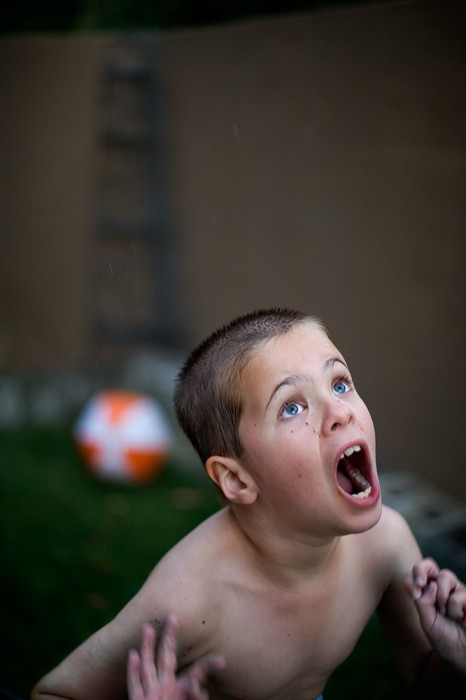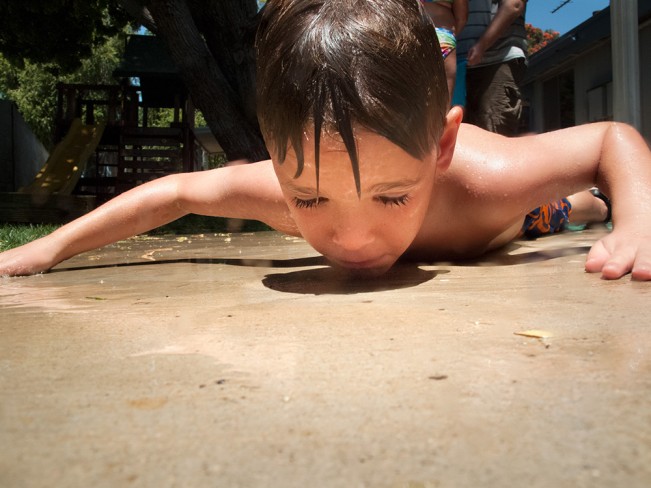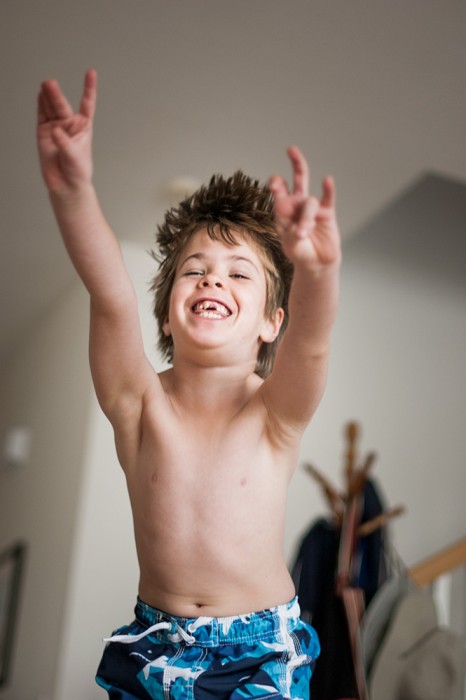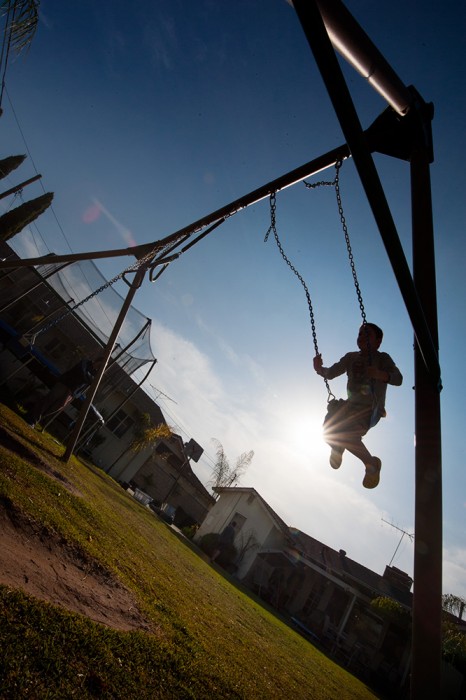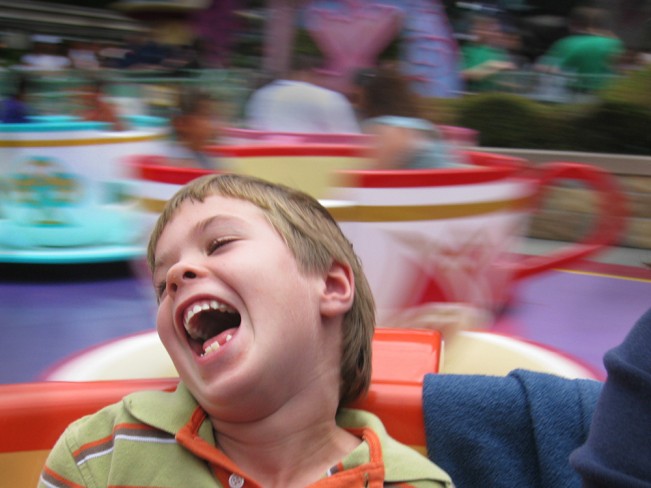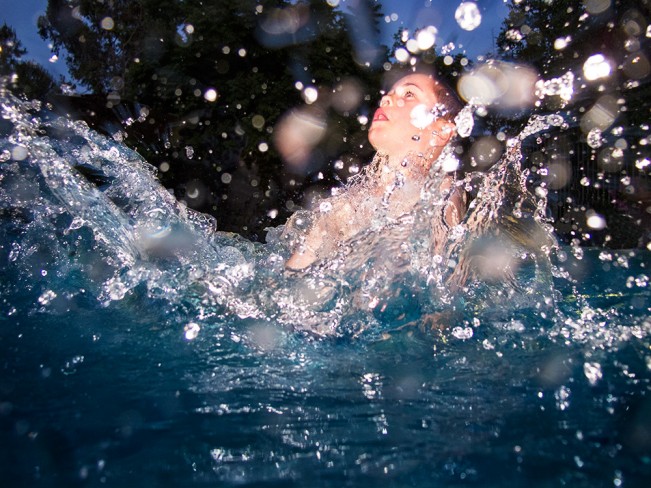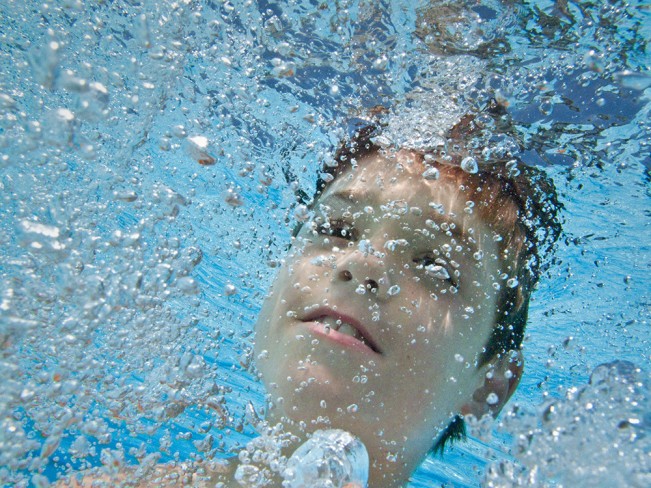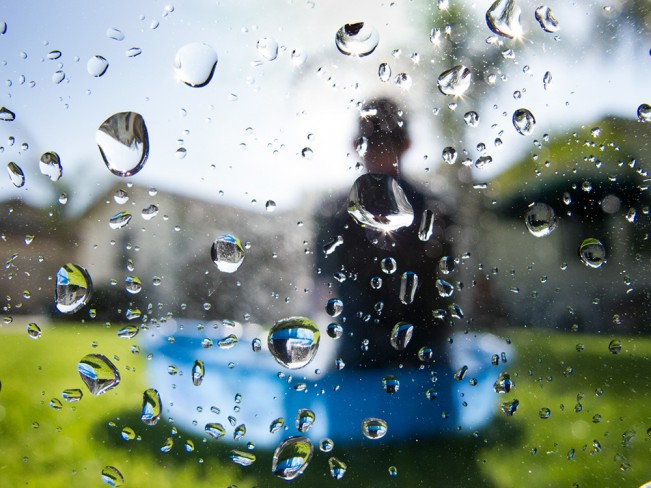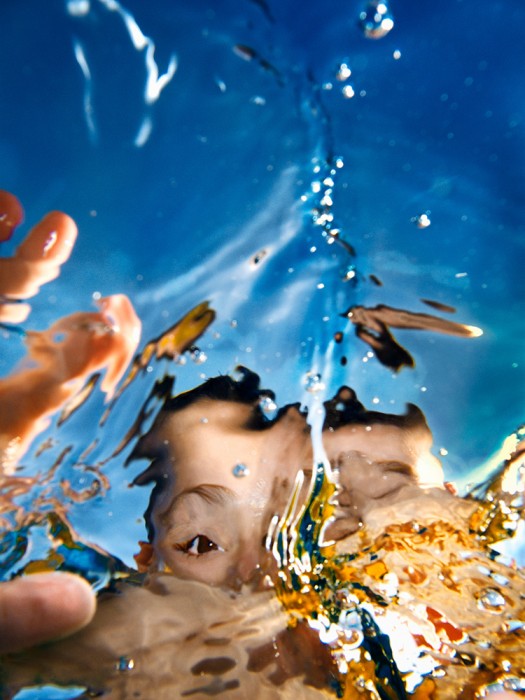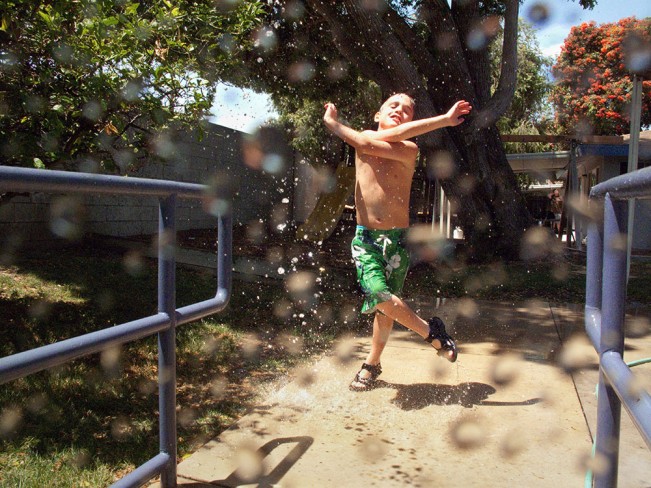Bruce Hall: Immersed: Our Experience with Autism
Autism is not subtle. It is not vague. It pervades everything, surfaces everywhere. It blends into the woven strands of life, of reality, attaching itself so swiftly and completely that the entire world seems recast, reformed, reimagined, rewritten. No space, no concept is left untouched. Like a stone thrown into a still pool, autism displaces and disrupts its surroundings, sending ripples outward, repeating its impact across the surface and beneath it. For those who are immersed in this surreal world, it looks and feels as though autism is simply in…everything.
Sometime ago, when I was attending the Photo L.A. photography expo, I came across the Blind Photographer’s Guild booth, featuring the work of visually challenged artists. I met the amazing Bruce Hall and came to know a man who has moved beyond his limitations to become a working photographer, creating his fine art projects and shooting for a variety of clients including Playboy! In addition to his challenges, Bruce and his wife, Valerie, are the parents of profoundly autistic twin sons, James and Jack. Here’s what I wrote about Bruce’s work some time back: “For an artist with impaired vision, Bruce Hall’s photographs are a remarkable testament to being present and connected as a father and as a participant observer in the life his sons. His photographs exude energy and pathos and intimacy that come from his profound ability to celebrate and document everyday moments of life in the Hall house. He uses those photographs to help us understand what it is like to live with autism, allowing us into his world, into what he knows to be true. And because of that process, Bruce changes a deeply personal visual experience into one that is universally meaningful.”
Bruce and Valerie have created a book of their experiences that uses words and images to tell their story. Immersed: Our Experience with Autism contains five years of writing, seven years of photography, and ten years of experiences. The result: 265 pages of vivid images and candid narrative, describing the challenging, surreal experience of having twin sons with severe autism. It includes over 170 full-color photographs and over 100 written pieces. Bruce and Valerie have created a Kickstarter campaign, launching today, to help raise funds to make the book a reality. Please consider supporting this effort–no contribution is too small (or large!).
Valerie Hall’s episodic text chronicles Jack’s and James’s condition as it transforms family life and poses ominous implications for the future. Her reactions to her own life in a world where autism makes the rules are candid and unfiltered. She rejects the tropes of most autism literature, spurning both memoir and “how-to” prescriptions. Instead, she invites you to encounter Jack and James as she does, as boys that are both beautiful and broken. The day-to-dayness of her account has the disturbing effect of allowing the reader to step into a world where expectations are upended, and encounters take on an aura of the surreal.
Bruce Hall aims his camera at Jack and James and brings back photographs that are unflinchingly close and personal. Through his very specificity, he opens a wider window into a foreign realm—the deep internal experience of autism. This selection of images is from Hall’s extended investigation of autism’s roiling surface. But it may well be something scarcer in photography and in art—a study not of surface, but of great depth.
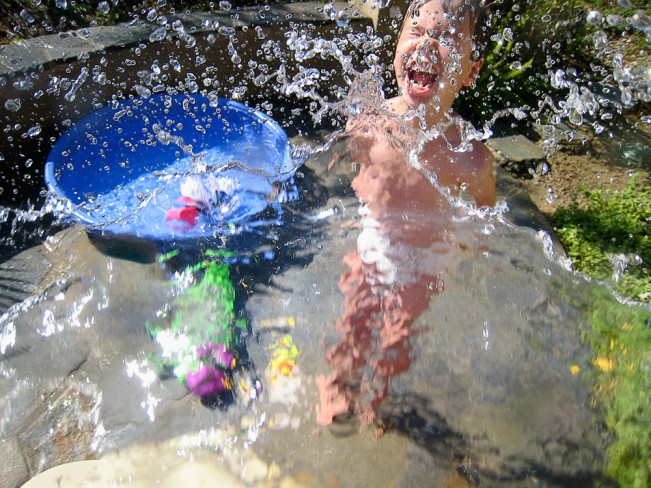
©Bruce Hall, James is seven years old. James cannot speak, and tell you how he feels. He is nearly always over-stimulated. James loves water, or does he?
Imprisonment of the body is bitter; imprisonment of the mind is worse.–Thornton Wilder
He’s there. But he’s not. He sees me. But he doesn’t. He makes lots of sounds. But no words. His body is healthy, thriving, perfectly functional in every way. His mind is none of those things. Silky hair, luminous eyes, baby-soft skin, winning smile. So extraordinarily beautiful on the outside. So broken on the inside.
Whatever James thinks or feels about his world, whatever sense of identity he has, whatever image he holds of himself, stays trapped inside him. Autism imprisons the mind in a way that impairs the understanding and assertion of self in relation to others. James cannot say “I am.” Worse, perhaps, he cannot even think it.
So much can be taken from us physically, denying us various experiences in the world. People lose limbs, go blind, are paralyzed. Vast arenas of possibility, lost. Yet, these people can still declare who they are, what they like and dislike, what they have achieved, what they still hope to achieve. They have ideas, seek experiences, learn new things, express opinions, argue for their rights. As bitter as their physical loss may be, they do not lose this sense of self.
The foundation from which a person begins to create meaning in life is the ability to control thought, to have the understanding to be able to say “I am,” and the awareness to see that we are heard. Would anyone willingly choose to be in this world otherwise, with body present but mind imprisoned? Is it even possible to find meaning in such a life?
James pours water over his hand, mesmerized by the sight, but he is unaware that most of what life can be, as enchanting and compelling to the rest of us as the running water is to him, slips continually through his fingers. – Valerie Hall
He is outside of everything, and an alien everywhere. He is an aesthetic solitary. – Henry James
Sometimes it seems like James belongs on another planet . . . Someplace with a completely different reality, where all the rules follow an alternative form of logic, and everything is perceived and interpreted according to physical laws that defy our own. And he may be wired perfectly for that other world. But he is not wired for this world. The traits we consider most human are exactly the ones that are alien to him. Language, mutual experience, relationships, empathy, a desire to create and express ideas, to achieve potential . . . Everything we may remember and value from our time on Earth and James seems to live outside of it.
Maybe, as we drift further into cyberspace, into virtual realities where we experience nothing directly, achieve nothing but the next level of a video game, evolve ever more into our individual bubbles where we are oblivious of each other and the world around us, producing absolutely nothing real, nothing that has our fingerprints on it, nothing that will ever be seen and appreciated, maybe then we will get close to seeing what it might be like in James’s world.
Here, alone, amid the flashing lights and distorted shapes, is where James lives. Maybe he does belong to our world, the kind of place our world is becoming. Maybe autism is a glimpse of the future, a warning of how we are evolving, the goal we are blindly racing toward. Inward. Isolated. Alien. – Valerie Hall
You will always find an answer in the sound of water.–Chuang-Tse
Only in the bathtub is James still and silent for more than a few moments at a time. Most of the time he splashes and yells, but sometimes he will lean back, put his ears completely underwater, and become utterly still. Perhaps he hears something, or maybe it is like being in the desert, with all the usual city sounds gone, and suddenly you can hear silence. Underwater is somewhat different. In the ocean, scuba diving, you hear a constant crackling static, and any other sounds are muted, slow.
We usually don’t realize how much continuous noise surrounds us. Our brains filter it out. Something repeated, any sensation, will cease to be perceived. This is survival. We notice what is different, tune out what is the same. It takes conscious effort to “hear” the clock ticking again. Maybe James’s brain cannot do this for him.
What if we heard everything, even repeated sounds, as though for the first time? What if our brains gave as much attention to the “same” as to the “different?” I sit in a coffee shop, writing this, and every time I concentrate on a thought or start writing something down, the continual noise around me seems to disappear. I stop writing, and it is suddenly there again. I could not write if I could not tune out the constant barrage of sounds.
As James lies still, with his ears underwater, he reflects a kind of peace and focus that I see in him at no other time. Maybe he likes it just because the worldly sounds are soothingly dampened. But his expression seems so intent and thoughtful that I could almost believe he is actually listening to something in the water. Maybe his questions about the world are answered there. Answers he cannot get from us.
I lean over and ask softly, “James, what do you hear?” A second. Then he suddenly looks at me, and his split-second expression seems to convey an abrupt return from another dimension. A second, then a small impish smile. And then he jerks up and starts splashing and yelling again. If he got an answer in the water, he’s not telling. – Valerie Hall
If only I had thought of a Kodak! I could have flashed that glimpse of the Under-world in a second, and examined it at leisure.
– H.G. Wells, The Time Machine
I watch James as he walks across the yard, back and forth, muttering happily at the stack of photos in his hands. He loves to look at photos, even the same ones, over and over. He especially loves photos of himself, but he does also like looking at photos of others in the family. Well, sometimes.
He sits on the grass, sets the photos on the ground, arranges them in piles, stacks them back in a different order. “James?” I point to the one he is looking at and ask him a question about it, but he does not look up. Sometimes when I ask him about a photo he will giggle, but usually he just turns his back, hunching over so that only he can see it.
It is like a close, private relationship, like nothing exists except James and his photos. He studies the faces and places, talking to them lovingly in his expressive gibberish. He has such a strong connection to them, spending so much time with them, day after day, and yet he has little interest in the actual people portrayed in the photos. For him, I suppose the people in the photos are ideal. They hold still, they don’t look back at him, talk at him, demand his attention or response. Without such interruptions or distractions, he can look closely at every detail, as long and as often as he wants.
I leave James with his photos and return to the house. At the end of the hall, I stop in the doorway of Bruce’s office. He has been holed up for the last couple hours, staring intently at his computer monitor. I wait there quietly for a few moments, but he does not look up.
“Bruce?” He still does not look up, but after a long moment replies, “Mmm?” Another long moment, nothing. I ask brightly, “Whatcha doin’?” He still doesn’t look up, but turns his back a little, hunches over the screen so I can’t see, and mutters, “Looking at pictures.” – Valerie Hall
About the authors…
Valerie Hall holds a Ph.D. in Educational Psychology and has been involved in the field of education for over 20 years. She is currently a researcher in the School of Education at the University of California, Irvine, where she has worked on several evaluations of after-school programs and has taught undergraduate and graduate courses in Learning and Cognition.
Bruce Hall is a legally blind photographer, teacher, and autism advocate. Hall’s photographs in this book are collisions between a photographer with just five percent of normal vision and his profoundly autistic, frenetically kinetic twin sons, Jack and James. The Library of Congress, Prints and Photographs Division purchased a portfolio of this work for its permanent collection.
Hall’s work has been published in textbooks, magazines including National Geographic, as well as been shown at the National Museum of Natural History at the Smithsonian; UCR/ California Museum of Photography, Riverside, California; The Kennedy Center, Washington D.C.; Center for Visual Art, Denver, Colorado; Naples Museum of Art, Naples, Florida; and the San Diego Natural History Museum. His work has also been exhibited internationally at museums in Mexico City, Moscow, and South Korea.
Posts on Lenscratch may not be reproduced without the permission of the Lenscratch staff and the photographer.
Recommended
-
Martin Stranka: All My StrangersDecember 14th, 2025
-
Interview with Maja Daniels: Gertrud, Natural Phenomena, and Alternative TimelinesNovember 16th, 2025
-
MG Vander Elst: SilencesOctober 21st, 2025
-
Photography Educator: Josh BirnbaumOctober 10th, 2025
-
Aiko Wakao Austin: What we inheritOctober 9th, 2025

